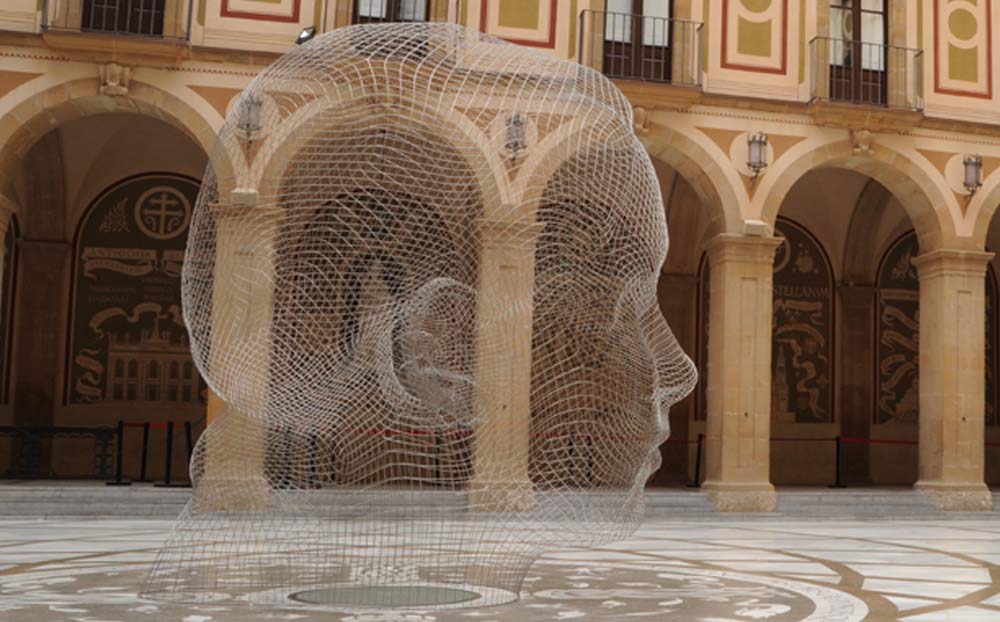Jaume Plensa in Montserrat

Jaume Plensa is presenting a double exhibition approach in Montserrat.
The Barcelonian artist has installed a big size sculpture in the Basilica’s atrium. Additionally, a selection of Plensa’s recent graphic art will be displayed at Espai d’Art Pere Pruna until November 3rd.
His sculpture in the middle of the atrium depicts a head made of stainless steel thread, transparent but visible, in his interest for the body and the soul. The idea of a portrait adopts an original attitude in which what is individual and what is universal dialogue paradoxically and, at the same time, fluently and intelligibly; its opacity and transparency change according to the distance and the closeness of the look. ‘The skin is the final border between our body and the void; it is the small thin line that separates the mass from the void. I am interested in the body as a place. Even when I am not working on the figure, the body is present because of its absence. I search for the soul, as José Àngel Valente did. That same concept of soul that Shakespeare tried to capture ’, says Jaume Plensa.
As for the paper graphic art exhibition that can be visited until November at Montserrat’s Museum, Jaume Plensa displays a selection of works that discuss about the human individual: torsos, faces, figures, bodies made of letters, of musical notes, etc. However, identity samples are hardly to be found, since the artist –always placing the anonymous as a starting point- seeks to make them intentionally universal.
Jaume Plensa (Barcelona, 1955) is an artist of materials, sensations and ideas. His references embrace the world of literature, poetry and thought. He considers himself above all a sculptor, although his creative process has gone through multiple disciplines. His works address the same nature of being: its physical and spiritual essence, the conscience of oneself and its past, its moral codes and dogmas, and its relationship with nature. Plensa’s work has gained worldwide impact: His works are displayed regularly in galleries and museums around Europe, United States and Asia. In addition to this, a very significant part of his works have been displayed permanently in public spaces in Spain, France, Japan, England, South Korea, Germany, Canada, United States or China.

